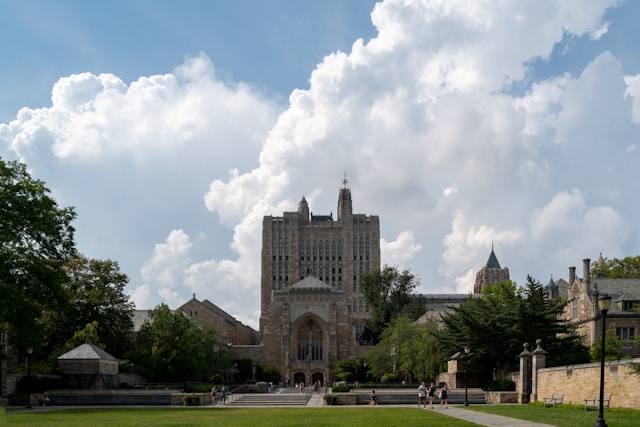Easton developer Stephen Shapiro has become a familiar face in Connecticut’s real estate world. With more than twenty years of experience, he’s now pushing a bold new idea: a 14-mile bridge connecting Bridgeport to Long Island.
To Shapiro, this project isn’t just about infrastructure. He sees it as an economic engine, a transportation link, and even a storm evacuation route.
Explore top-rated stays with no booking fees and instant confirmation. Your dream trip starts here!
Start Exploring Now
He’s also keeping up his campaign for more “middle housing” in Fairfield, New Haven, and Hartford counties. That’s a big deal for a lot of communities struggling with housing shortages.
A Bold Vision for a Bridge Across Long Island Sound
Shapiro’s bridge would run from Bridgeport over Long Island Sound. The plan includes roadways and a lower-level rail line that would link Metro-North to the Long Island Rail Road (LIRR).
He thinks this span could change transportation in Connecticut. The bridge could help with long-standing traffic problems on I‑95 and the Merritt Parkway.
Billions in Economic Potential
Shapiro estimates the bridge could pull in $8 to $10 billion a year. A $39 toll, he claims, would pay for construction in about 48 years.
That’s not even counting the wider economic effects on Bridgeport, New Haven, and nearby cities. He argues the bridge would also beat ferry travel for speed and cost, and could serve as a crucial evacuation route during major storms.
Political Interest and Job Creation
The idea has grabbed attention at the state level. State Rep. Joe Hoxha says the bridge could create jobs, boost tax revenue, and open doors to federal infrastructure money.
It’s a project that could reach beyond Bridgeport, with potential benefits for places like Stamford, Norwalk, and Waterbury.
A Statewide Impact
Job opportunities wouldn’t stop with construction. With easier access to Long Island, Connecticut might see a surge in cross-Sound business.
That could breathe new life into local economies from Fairfield to Milford. Maybe southwestern Connecticut becomes an even hotter spot for business investment—who knows?
Addressing Connecticut’s Middle Housing Shortage
The bridge grabs headlines, but Shapiro hasn’t lost sight of Connecticut’s housing crunch. He focuses on middle housing—homes meant for town workers, seniors, and folks who need to live close to their jobs.
He wants to make it easier for people to live where they work. That could mean shorter commutes and tighter-knit communities.
Active Projects Across Multiple Towns
Shapiro’s already got approved and active housing projects in:
- Fairfield
- Bristol
- Monroe
- Newtown
- Stratford
He’s waiting on decisions for proposals in:
- Trumbull
- Shelton
- Milford
- The Easton/Trumbull line
Legislative Advocacy for Housing Incentives
To help the middle housing market, Shapiro teamed up with former Connecticut House Speaker Jim Amann. Together, they’re lobbying for state incentives.
They want measures similar to what’s allowed under Connecticut’s 8‑30g affordable housing statute. The goal is to make these projects more doable for developers willing to build workforce housing.
Overcoming Opposition
Shapiro keeps moving forward, even when residents push back with appeals and petitions. He’s focusing on projects near public transit in places like Stamford, Norwalk, and Milford.
He really seems to believe that housing and infrastructure need to work together if Connecticut wants to keep up with changing economic and social needs.
More Than Just Profit
Shapiro says the Bridgeport–Long Island bridge and his housing work are about more than just making money. He’s aiming for long-term fixes to big challenges.
Whether it’s easing highway gridlock or making sure seniors and workers have somewhere to live, his strategy is about community as much as development. That’s the hope, anyway.
The Road — and Bridge — Ahead
Will the 14-mile bridge across the Sound ever get built? That depends on political will, the right funding, and whether the public gets behind it.
Shapiro’s push for infrastructure and housing hints at a bigger conversation in Connecticut. How do we actually grow, connect, and keep communities strong from Easton to Stamford—and make sure those changes help both residents and the state’s economy?
If you’d like, I can also create a **clickable SEO meta description** and **keyword list** so this blog post is fully optimized for search engines. Would you like me to do that?
Here is the source article for this story: A bridge to Long Island? Prolific Bridgeport-area housing developer has ideas he wants to share
Find available hotels and vacation homes instantly. No fees, best rates guaranteed!
Check Availability Now








